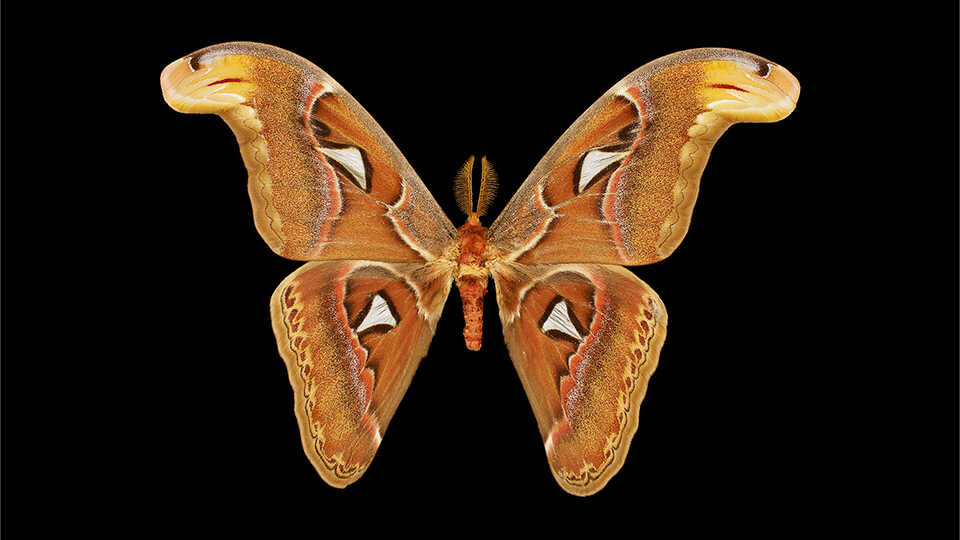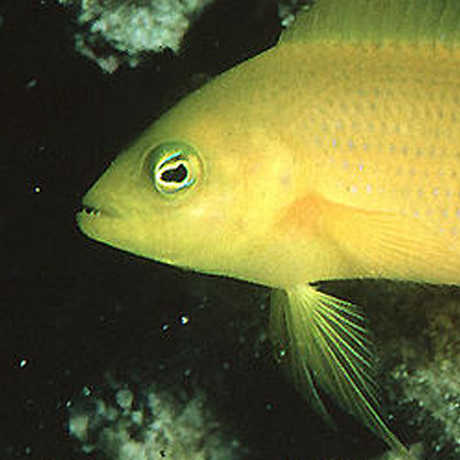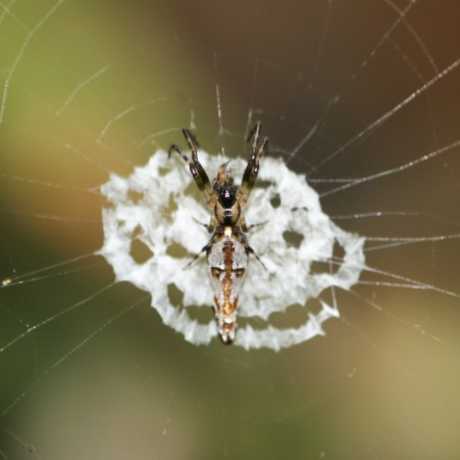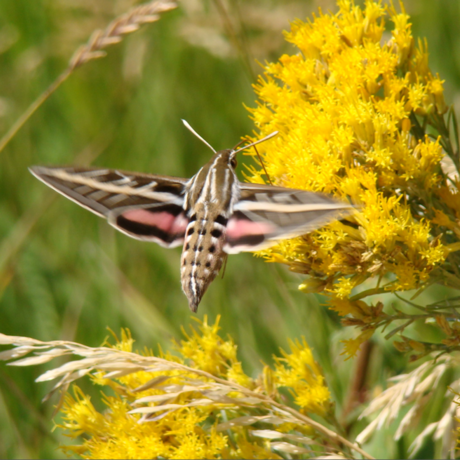Our Work
Atlas Moth

An Atlas moth (Attacus atlas) rests on a tree trunk with its wings closed. A bird, hoping for a snack, creeps closer, until it's within striking distance. Just as it’s about to pounce, the moth’s wings spring open—and bam! Instead of a moth, the bird suddenly sees not one, but two snake heads. Confused and startled, the bird flies away—and the moth gets to live another day.
Atlas moths are perhaps most famous for the markings on the upper corner of their wings, which bear an uncanny resemblance to cobra heads (in profile). While not all entomologists are convinced of that visual mimicry, there is some convincing evidence. Cobras live in the same part of the world as these moths, and the moth’s main predators—birds and lizards—are visual hunters. Plus, species related to the Atlas moth have similar but less defined versions of the snake’s head, showing a pattern that could have been fine-tuned by natural selection.
In addition to the markings, the wings of the Atlas moth contain translucent areas that may function as “eyespots.” These false eyes could not only startle predators, but could also divert attention from more vulnerable parts of the moth’s body. If, say, a particularly stubborn predator decides to attack the eyespots, damage to the wings would not be as catastrophic as damage to the moth’s head or body. In the bird-eat-bug world, a little ruse can mean the difference between life and death.
Range
The Atlas moth lives in Asia, from India to the Philippines and south to Indonesia. It belongs to the family Saturniidae, or giant silkworm moths, which has a worldwide distribution.
Flying giant
The Atlas moth is one of the largest moths in the world in terms of wing surface area and wingspan. With a maximum wingspan of about 10 inches, it finishes just behind the white witch moth (Thysania agrippina) of Central and South America, which holds the record for largest wingspan at about 14 inches.
What's in a name?
If you were to look at this moth’s wings under a microscope, you'd see thousands of tiny, overlapping scales. These scales are pigmented and collectively create the different colors and patterns on the wings. Lepidoptera—the order of insects to which butterflies and moths belong—is in fact Greek for “scaly wing.”
Collections overview
The Academy has more than 700,000 butterflies and moths in its collection, 38 of which are Atlas moths. Many of these specimens can be seen online by browsing the Entomology Collections.
The Academy holds one of the four largest entomology collections in North America, containing approximately 10 million curated specimens representing all orders, nearly all families, and approximately 250,000 species of insects, myriapods, and arachnids. Meet the researchers, explore projects and expeditions, and more.





